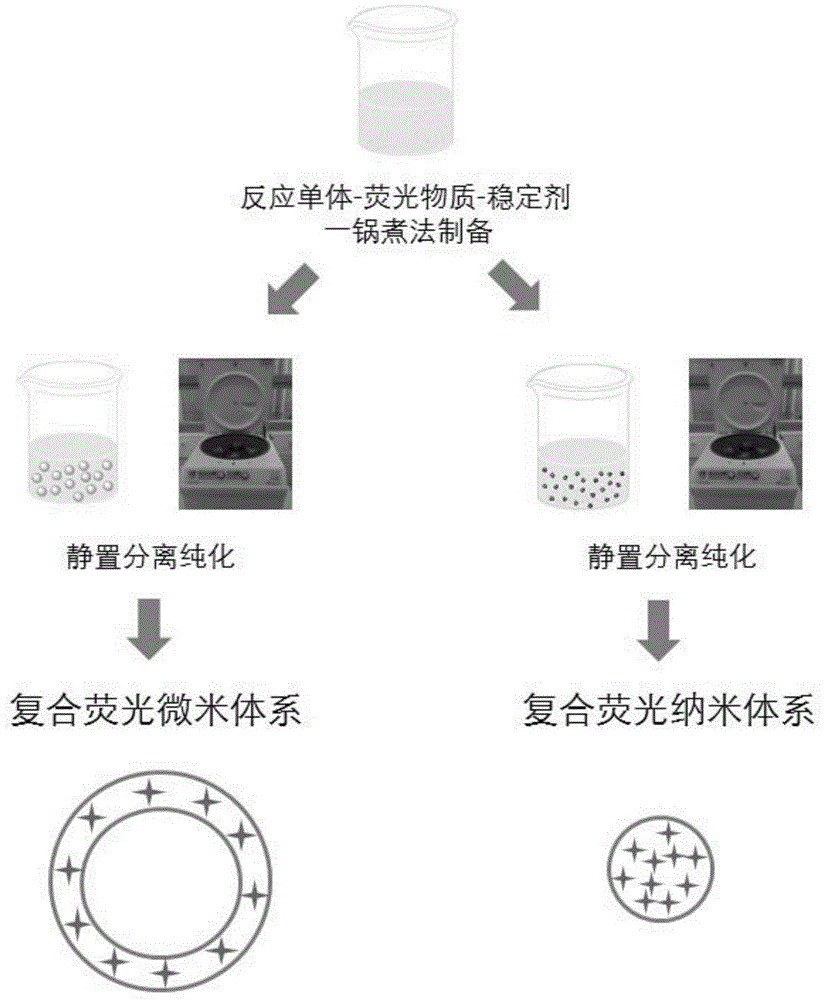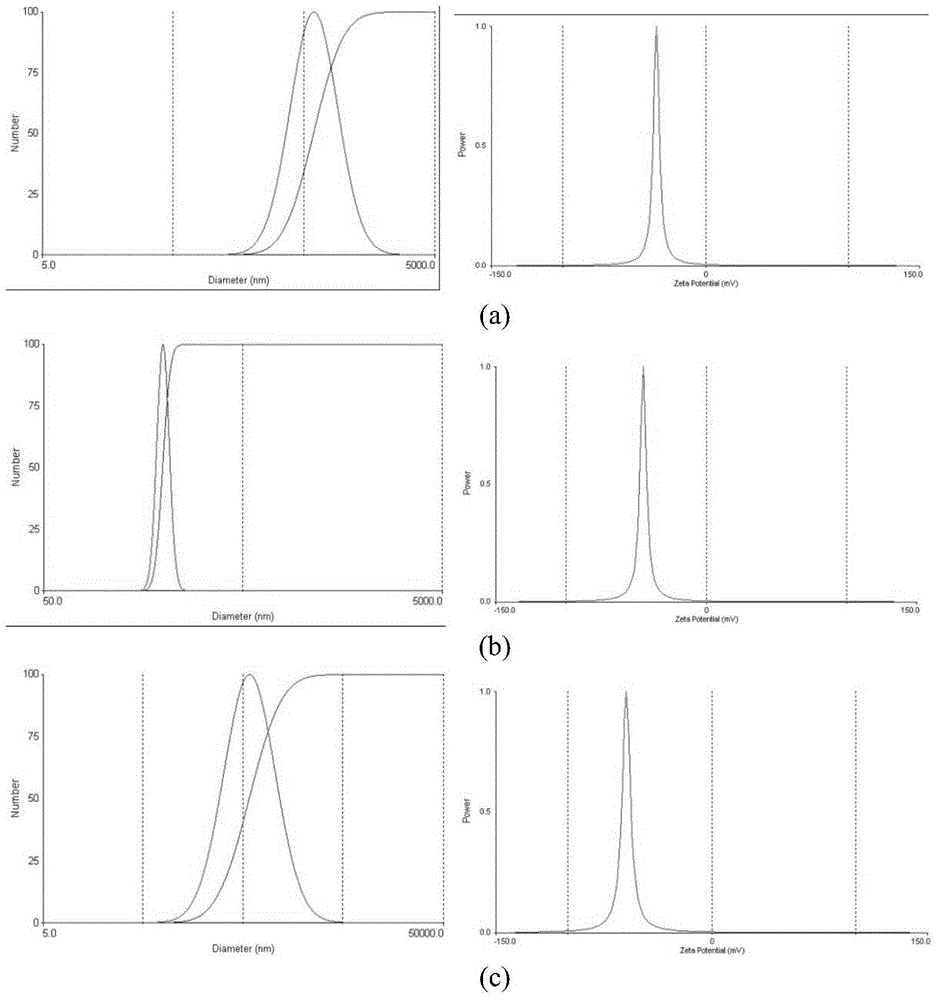Compound fluorescent micro-nano system and preparation method thereof based on one-pot process
A technology of composite fluorescence and preparation process, which is applied in the field of composite fluorescence micro-nano system and its preparation process based on one-pot cooking method, which can solve the problems of complex steps, toxicity, and inability to evaluate the biological safety of polymers in vivo, and achieve the goal of targeting and release, expand the preparation process, and improve the effect of bioavailability
- Summary
- Abstract
- Description
- Claims
- Application Information
AI Technical Summary
Problems solved by technology
Method used
Image
Examples
Embodiment 1
[0029] Example 1: Butyl acrylate (1.5 ml), polyethylene glycol octyl phenyl ether aqueous solution (250 ml), and rhodamine (9.6 mg) were fed into a 500 ml beaker, and the pH of the reaction system was adjusted to 2.5. After stirring at a high speed at room temperature for 1 hour, dilute sodium hydroxide solution was added to terminate the reaction. The reaction system was transferred to a separatory funnel and left to stand for 6 hours, and the reaction residue at the bottom layer was discarded. Transfer the reaction solution to a centrifuge tube for purification and centrifugation for 20 minutes, carefully collect the top product layer, and wash with polyethylene glycol octylphenyl ether solution. Repeat the above steps at least 2-4 times, re-disperse into the polyethylene glycol octyl phenyl ether solution after concentration, and store at room temperature. The particle size of the composite fluorescent micro-nano system containing rhodamine was measured by laser particle s...
Embodiment 2
[0030] Example 2: Butyl acrylate (1.5 ml), dextran aqueous solution (100 ml), and rhodamine (9.6 mg) were fed into a 250 ml beaker, and the pH of the reaction system was adjusted to 2.5. After magnetic stirring at room temperature for 4 hours, dilute sodium hydroxide solution was added to terminate the reaction. The reaction system was left to stand for 6 hours, then all the reaction solution was transferred to a centrifuge tube and centrifuged for 30 minutes, the supernatant was discarded, washed with high-purity water, and vortexed several times. The centrifugation step is repeated at least 2-4 times, and after concentrating, a composite fluorescent micro-nano system containing rhodamine is obtained, which can be freeze-dried in vacuum or dispersed in high-purity water for storage again. As measured by a laser particle size analyzer, the particle size of the rhodamine-containing composite fluorescent micro-nano system is 252.8±46.2 nanometers, and the surface potential is -3...
Embodiment 3
[0031] Example 3: Butyl acrylate (1.5 ml), polyethylene glycol octyl phenyl ether aqueous solution (250 ml), and coumarin 6 (7.0 mg) were fed into a 500 ml beaker, and the pH of the reaction system was adjusted to 2.5. After stirring at a high speed at room temperature for 1 hour, dilute sodium hydroxide solution was added to terminate the reaction. The reaction system was transferred to a separatory funnel and left to stand for 6 hours, and the reaction residue at the bottom layer was discarded. Transfer the reaction solution to a centrifuge tube for purification and centrifugation for 20 minutes, carefully collect the top product layer, and wash with polyethylene glycol octylphenyl ether solution. Repeat the above steps at least 2-4 times, re-disperse into the polyethylene glycol octyl phenyl ether solution after concentration, and store at room temperature. The particle size of the composite fluorescent micro-nano system loaded with coumarin 6 is 4.17±0.96 microns and the su...
PUM
| Property | Measurement | Unit |
|---|---|---|
| diameter | aaaaa | aaaaa |
| electric potential / voltage | aaaaa | aaaaa |
| diameter | aaaaa | aaaaa |
Abstract
Description
Claims
Application Information
 Login to View More
Login to View More - R&D
- Intellectual Property
- Life Sciences
- Materials
- Tech Scout
- Unparalleled Data Quality
- Higher Quality Content
- 60% Fewer Hallucinations
Browse by: Latest US Patents, China's latest patents, Technical Efficacy Thesaurus, Application Domain, Technology Topic, Popular Technical Reports.
© 2025 PatSnap. All rights reserved.Legal|Privacy policy|Modern Slavery Act Transparency Statement|Sitemap|About US| Contact US: help@patsnap.com



